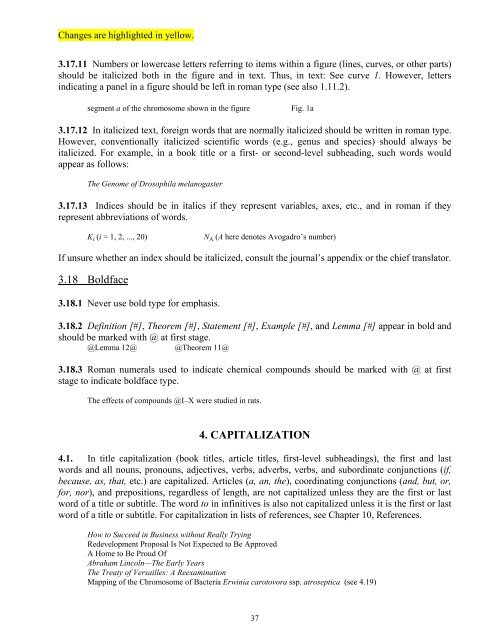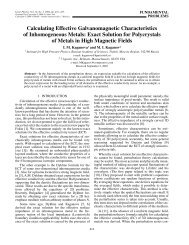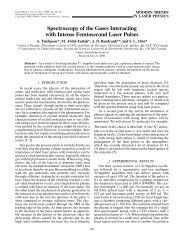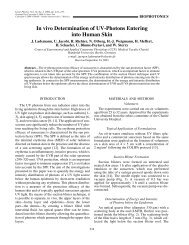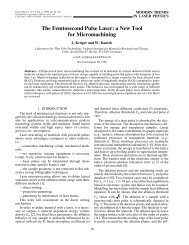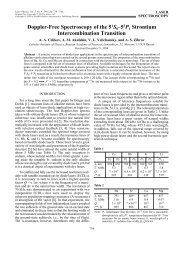House Style Guide 2011 - MAIK "Nauka/Interperiodica"
House Style Guide 2011 - MAIK "Nauka/Interperiodica"
House Style Guide 2011 - MAIK "Nauka/Interperiodica"
- TAGS
- maik
- www.maik.ru
You also want an ePaper? Increase the reach of your titles
YUMPU automatically turns print PDFs into web optimized ePapers that Google loves.
Changes are highlighted in yellow.<br />
3.17.11 Numbers or lowercase letters referring to items within a figure (lines, curves, or other parts)<br />
should be italicized both in the figure and in text. Thus, in text: See curve 1. However, letters<br />
indicating a panel in a figure should be left in roman type (see also 1.11.2).<br />
segment a of the chromosome shown in the figure Fig. 1a<br />
3.17.12 In italicized text, foreign words that are normally italicized should be written in roman type.<br />
However, conventionally italicized scientific words (e.g., genus and species) should always be<br />
italicized. For example, in a book title or a first- or second-level subheading, such words would<br />
appear as follows:<br />
The Genome of Drosophila melanogaster<br />
3.17.13 Indices should be in italics if they represent variables, axes, etc., and in roman if they<br />
represent abbreviations of words.<br />
K i (i = 1, 2, ..., 20) N A (A here denotes Avogadro’s number)<br />
If unsure whether an index should be italicized, consult the journal’s appendix or the chief translator.<br />
3.18 Boldface<br />
3.18.1 Never use bold type for emphasis.<br />
3.18.2 Definition [#], Theorem [#], Statement [#], Example [#], and Lemma [#] appear in bold and<br />
should be marked with @ at first stage.<br />
@Lemma 12@ @Theorem 11@<br />
3.18.3 Roman numerals used to indicate chemical compounds should be marked with @ at first<br />
stage to indicate boldface type.<br />
The effects of compounds @I–X were studied in rats.<br />
4. CAPITALIZATION<br />
4.1. In title capitalization (book titles, article titles, first-level subheadings), the first and last<br />
words and all nouns, pronouns, adjectives, verbs, adverbs, verbs, and subordinate conjunctions (if,<br />
because, as, that, etc.) are capitalized. Articles (a, an, the), coordinating conjunctions (and, but, or,<br />
for, nor), and prepositions, regardless of length, are not capitalized unless they are the first or last<br />
word of a title or subtitle. The word to in infinitives is also not capitalized unless it is the first or last<br />
word of a title or subtitle. For capitalization in lists of references, see Chapter 10, References.<br />
How to Succeed in Business without Really Trying<br />
Redevelopment Proposal Is Not Expected to Be Approved<br />
A Home to Be Proud Of<br />
Abraham Lincoln—The Early Years<br />
The Treaty of Versailles: A Reexamination<br />
Mapping of the Chromosome of Bacteria Erwinia carotovora ssp. atroseptica (see 4.19)<br />
37


